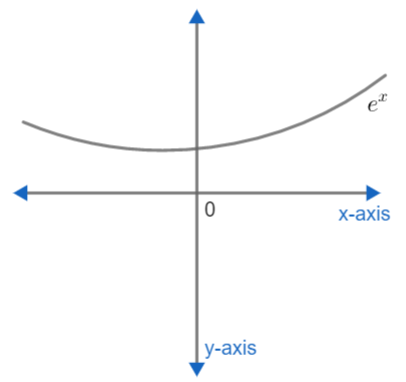Question
Question: Let f be a function from \(f:R\to R\) defined as \(f\left( x \right)={{e}^{{{x}^{2}}}}+\cos x\) then...
Let f be a function from f:R→R defined as f(x)=ex2+cosx then f is
& \text{A}.\text{ One}-\text{one and onto} \\\ & \text{B}.\text{ One}-\text{one and into} \\\ & \text{C}.\text{ Many}-\text{one and onto} \\\ & \text{D}.\text{ Many}-\text{one and into} \\\ \end{aligned}$$Solution
First we will define one-one and onto function. If g:X→Y is a function then g(x1)=g(x2)⇒x1=x2 then g is one-one otherwise many-one. So, we will assume a value x,y∈R such that f (y) = f (x) then check whether x = y or not. Similarly, a function is onto if every element in the domain has a preimage, so, we will check if any value of k doesn't have pre image with respect to f in k.
Complete step by step answer:
Let us define a function g:X→Y such that g(x)=y ∀x∈X,y∈Y
Then function g (x) is called one-one if for g(x1)=g(x2)⇒x1=x2 where x1,x2∈X
If for g(x1)=g(x2)⇒x1=x2 then g (x) is many-one function.
A function ‘g’ as defined above is called onto a function if ∀y∈Y,x∈X such that g (x) = y.
Basically every element y∈Y has its pre image in X∈Y
If g (x) doesn't satisfy this condition then it is called into function.
We are given f(x):R→Rf(x)=ex2+cosx
Consider x1=π∈R and x2=−π∈R
Then let us compute f(π) and f(−π)
Value of f(π)=eπ2+cosπ . . . . . . . . (i) and value of f(−π) is f(−π)=e(−π)2+cos(−π)
Now as cos(−θ)=cosθ and (−π)2=π
f(−π)=eπ2+cosπ . . . . . . . . (ii)
From equation (i) and (ii) we see that
f(π)=f(−π) but π=−π
For π∈R and −π∈R and f(π)=f(−π)
We did not get π=−π
Hence, f is not a one-one function.
Thus, f is a many-one function.
Finally we will check for onto.
f is defined from R→R which is real and has all positive and negative values. Now, consider the fact that ex≥0 ∀x∈1R
Graph of ex is as below:

So, f(x)=ex2+cosx
Let x=π then as π∈R so f(π) is defined
f(π)=eπ2+cosπ
Now value of cosπ=−1
Now as eπ2=e(3.14)2 and (3.14)2 > 1
By graph of ex we have e(3.14)2 > 1
As e0=1

So as eπ2 > 1⇒eπ2−1 > 0
Hence, f(π) > 0 that is f(π) is positive.
As a range of cosθ=[−1,1] therefore, it can have no values less than -1 and greater than +1.
So, we have observed that the least value of cosx=−1 at x=π is giving f(x)=f(π) as positive.
Therefore, as it is giving the value of f (x) at least the value of cos x.
i) For any values of cos x, f (x) is always positive. But f was defined from R→R
ii) Negative reals are not in the image of f.
iii) There exist negative reals whose preimage is not present in f.
Therefore, f is not onto. f is into.
So, the correct answer is “Option D”.
Note: The possible confusion is the onto part. There is another way to see if the function f (x) is onto or not.
Observe that ex > 0 ∀x∈R and cos(−θ)=cosθ whose value lies between [-1, 1]. So, even if cosθ has -1 as value then also the term eπ2−1 is positive as eπ2=e(3.14)2 > 1
